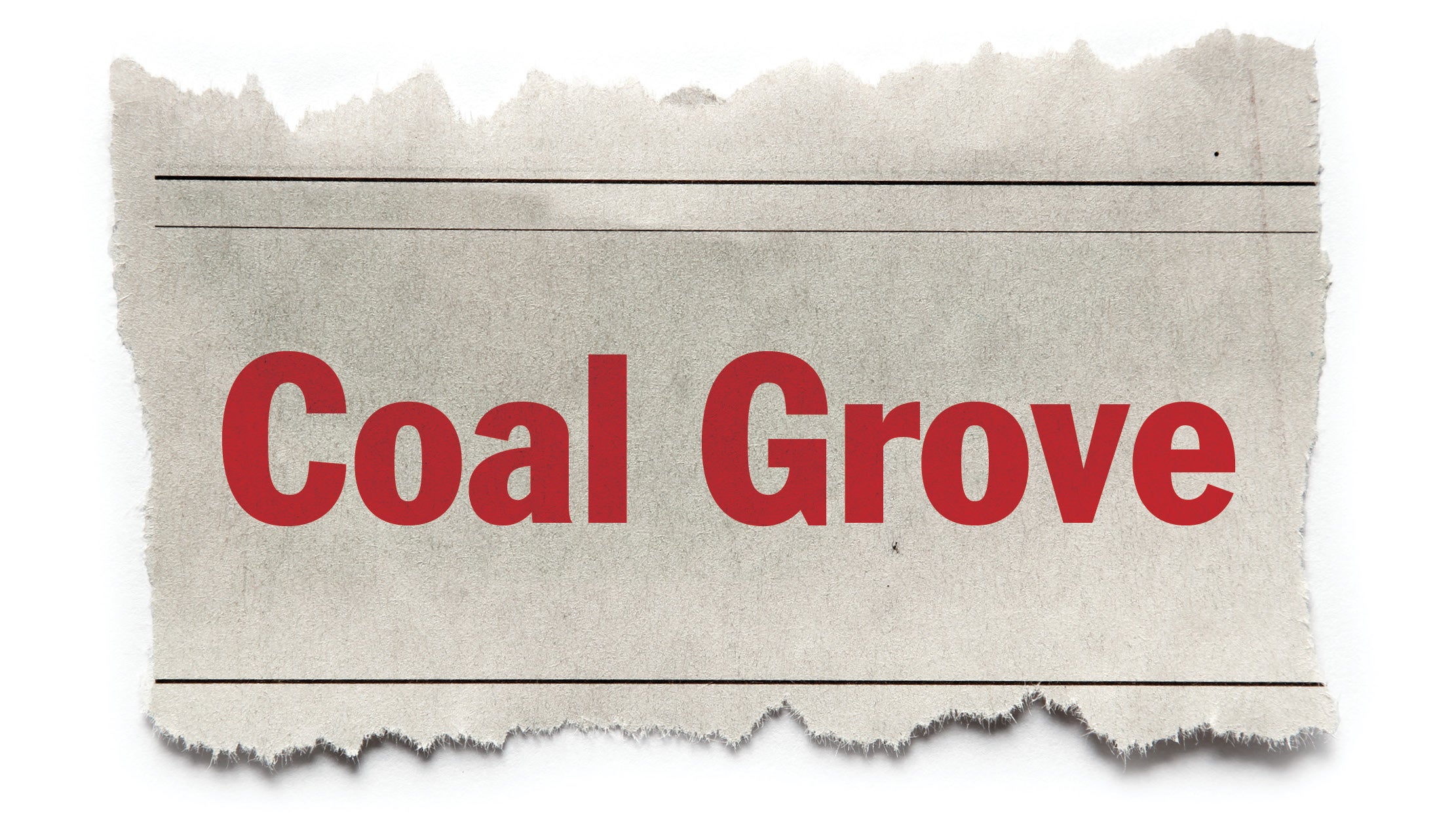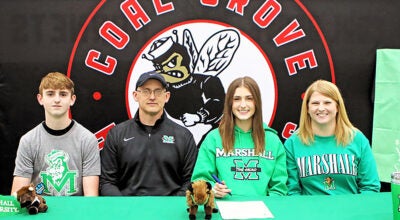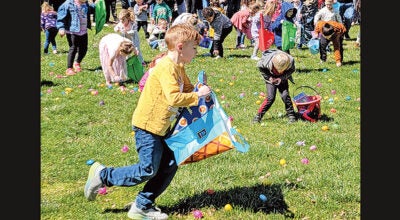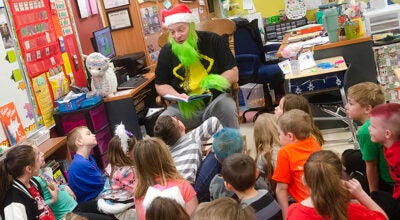Coal Grove teacher, students uncover history
Published 9:32 am Friday, March 1, 2013
COAL GROVE — While most grade schools throughout Lawrence County are named after the cities, towns or villages they are located in, Coal Grove went a different route.
Dawson-Bryant and schools are named after Homer Dawson and Curtis Bryant, two of the first Lawrence County men who made the ultimate sacrifice during World War I.
To further honor their legacy, and others in Coal Grove who have contributed to making it the village it is today, one Dawson-Bryant High history professor Dean Mader and his students have begun the “Coal Grove Memory Project.”
The project is designed to collect pictures, letters, personal accounts and any other historical reference to persons and events significant to Coal Grove.
“People have been super helpful once we have contacted them, but we are having trouble finding people to give us information,” Mader said. “I started this elective class with my students, and our goal is to take images we’ve collected and create a mural along the hallway.”
While the project has been dubbed “Paint the Walls” by the students, Mader said the mural is planned to be an acrylic glass display mounted to the walls. Photos from their collection will be used to highlight historical Coal Grove moments and people.
Mader said he has already run into some interesting obstacles while searching for information. Dawson is buried in Woodland Cemetery, but the other school namesake rests in the Meuse-Argonne American Cemetery in France.
“Once we knew where Curtis Bryant was buried I went online to try and contact them,” Mader said. “They were very helpful, and as blind dumb luck would have it, they were able to take a picture during Armistice Day. They had their ceremonies that day. Then that night their director went out and took the pictures for us.”
Mader said he was impressed with the help he received from David W. Bedford, superintendent of the cemetery. He said Bedford not only went out of his way to take photos, but was always prompt in returning his email correspondence.
The following are two excerpts from an email sent to Mader from Bedford:
“I owe you some research and will put this high on my priority list. I have walked on the war torn terrain where Private Bryant perished, if he was with his unit on that day. That day was the first day of battle of what was to be the largest battle America ever fought, to that time or since, starting the 28th of September 1918. The field of battle remains deeply scarred even now 93 years later, as it was the line of four years of combat between the French and the Germans.
“If Curtis was with his unit the day he died then most certainly he faced some of the toughest combat that any American fighting force would ever face.
“The 37th had covered over four miles on the 26th of September, it would take them five days to fight for about three more miles, and then they were relieved by the 3rd and 32nd Divisions about the 3rd of October.
“When a division was relieved it was because of combat losses, i.e. dead, wounded and too often exhausted as they would under those terrible circumstances become ineffective. As you can find in To Conquer Hell, the divisions that first started the offensive went for several days without resupply frequently running low on ammunition and often without food. The weather was foggy and wet with frequent heavy rain.
“The men, when they could, slept on the ground in bomb craters or quickly dug fox holes, just deep enough to get a man’s body below ground level so that he wouldn’t be shot or hit by shrapnel.
“They travelled light and took no sleeping bags or their ordinary heavy coats that might offer some comfort. It was not at all a nice life, it was more an existence.”
Mader said not only was Bedford speedy in his replies, but he enjoyed the way he wrote, truly painting the picture of what Bryant and Dawson must have faced in their final days.
The project has grabbed attention of state officials outside of Lawrence County, Mader said. He said someone from Gov. John Kasich’s office contacted him, excited about the project.
“’I don’t want you to half do this, I want you to do it right. If you need anything you just let me know’ he told me,” Mader said. “He said to expect calls from people and one of the guys was from the Ohio Historical Society, who I’ve talked with before while trying to find out if anyone else had done anything like this. When he called he had remembered talking with me before, and said he was told to call. I admit it was a little awkward. We talked about grants, but the stipulations didn’t really seem like something we could do at this time.”
Besides the mural he plans to have up sometime this year, Mader said he would like to see some historical markers placed in Coal Grove. He said there are some scattered throughout the county, but none within the village.
Mader said this project still has years left before completion, if completion is even possible. Even after the mural gets set up and historical markers place, history is ongoing, he said. The more people who come forward, donate items, photos or stories the more the project will grow.





